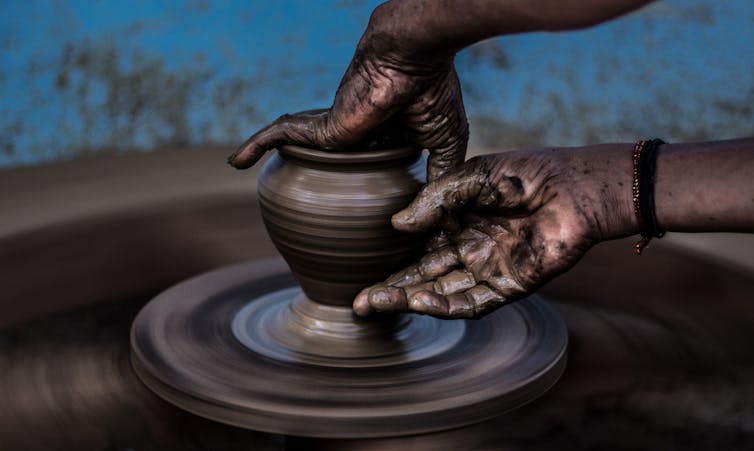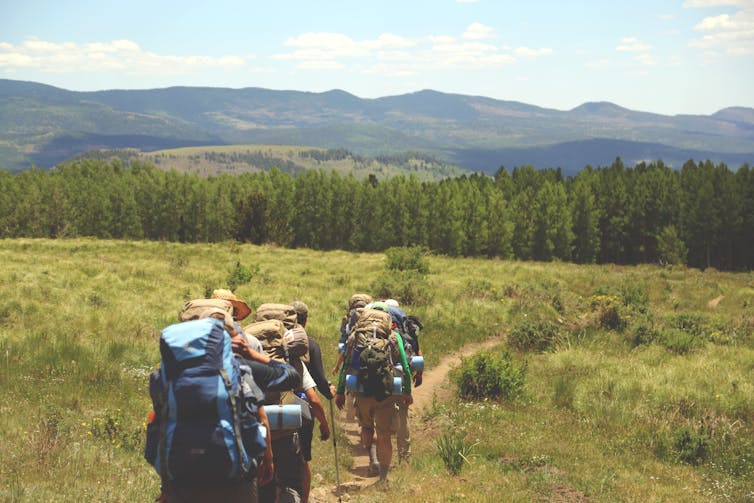In the age of FOMO (fear of missing out) and YOLO (you only live once), people are pursuing sensations and memories over material products more than ever.
Statistics from Barclaycard show that in the UK, spending on theme parks, tourist attractions, garden centres, pubs and restaurants is on the up, while sales for department stores, clothing, gifts and appliances are falling. Similar trends are in motion elsewhere.
The passing of “peak stuff” has the potential to be good news for the planet. As society becomes increasingly aware that consumption is putting intolerable strain on the planet, sharing experiences can be a more sustainable way to show appreciation for ourselves, our friends, and our family.
But this is not a given. Many businesses are capitalising on the rise in experiential consumption with new and expensive ways to make memories—and many of them are just as damaging for the planet. To avoid these pitfalls, we need to think local.
Shifting our focus from product to process has many ethical positives. Taking part in something, such as a pottery class, is both mentally and physically rewarding. For example, engagement in creative arts and crafts can enhance well-being, self-expression, and community involvement.
This involvement also creates an awareness and sense of responsibility for what we use in a way that passively clicking and collecting doesn’t. When we put together a holiday for example, we are much more conscious of the elements that go into this than when picking one off the shelf.
This heightened awareness can help address the green consumption gap—wherein a majority of consumers are concerned about environmental issues, but only a minority choose more sustainable options. Education is recognised by organisations such as UNESCO as one of the most powerful tools to support us in making more responsible choices.

Involving ourselves in the process of consuming generates a sense of ownership over it too. This is important, because it empowers people to feel that they can control how and what they consume. This creates opportunities for the popular perception that it is too hard to be green to be shattered—especially if the experiences teach skills that can reduce a person’s ecological footprint.
The dark side
But experiential consumption can have a dark side that encourages consumers to ignore rather than engage with sustainability. It is often particularly hedonistic—in place of material exchange, it encourages indulgence in the moment.
Businesses have been quick to realise the commercial potential of this. Rather than showing off how much stuff we own, we can show off how active our lives are. For example, increasingly popular extreme fitness challenges let participants show off their prowess in a competitive world.
This might not always result in environmental harm. But in the case of tourism, a sector where the potential of the experience economy was recognised early, the increasing demand for new and far-flung experiences has contributed to a doubling of transport emissions in the past 40 years and is straining ecosystems in popular destinations.
New fashionable destinations arise every few years and waves of tourists, often denude a location and then move on leaving problems in their wake. Maya Bay in Thailand, made famous by popular film The Beach, received such heavy footfall that most of the area’s coral died, forcing authorities to close the area for three years to allow ecosystems to recover. The Arctic is now experiencing a similar boom in tourism, bringing new stresses to already fragile ecosystems.
“
Many businesses are capitalising on the rise in experiential consumption with new and expensive ways to make memories—and many of them are just as damaging for the planet.
Even if experiences are sold as sustainable, the hedonistic nature of holidays can overwhelm good intentions. Knowing that an experience is sustainable can actually increase consumption. For example, people staying at ecolodges can end up using more water and energy than they otherwise would. Even planning to do good in future gives people licence to be bad now.
If we are to marry experience-seeking with sustainability, we need to be conscious of these tendencies. We also need to redefine our ideas of rewarding experience away from the expensive and far-flung and towards the local. Some of the best memories come from new and unexpected encounters and exchanges with others—but their distance from home doesn’t need to be important.
If we are travelling far, it helps to choose experiences that actively involve local residents, who have a greater interest in looking after the local environment and can ensure problems arising from tourism are resolved.

As for the journeys to these destinations, the more we can stick to slower but lower-carbon forms of travel, the better. Shared with loved ones, the journey can be just as fun as the destination.
Throwing in the nine to five and moving into a converted van to travel the world—known as “#vanlife”—can be a more sustainable way to live and travel if moving at a slow pace, culture of sustainability and is currently one of the most popular hashtags on social media. Long-distance cycles and walking treks are an even better way to turn the destination into the journey and experience the world without harming it.
Rising consumption
Of course, the increasing popularity of experiences over products does not automatically mean that consumption is in decline. Even established product manufacturers are findings ways to put an experiential spin on things.
Hurom, a Korean manufacturer of high-end juicers markets their machines as making users’ lives healthier and more meaningful to go beyond the product itself and evoke sense experience. It has even set up juice cafes to offer consumers the experience of sampling the juice and juicer before making a purchase.
Indeed, the latest sales figures from China’s “singles day”, Black Friday, and Cyber Monday suggest that overall consumption is still rising.
Ultimately, whether its products or experiences we’re buying, there’s no escaping the reality that we need to be buying less—and to be conscious of the impacts of those we do buy. This may not be popular with businesses keen to push us towards expensive activities to protect their bottom line. But its exactly what the planet needs.
Brendan Canavan is a lecturer in marketing at the University of Huddersfield. This article was originally published on The Conversation.











